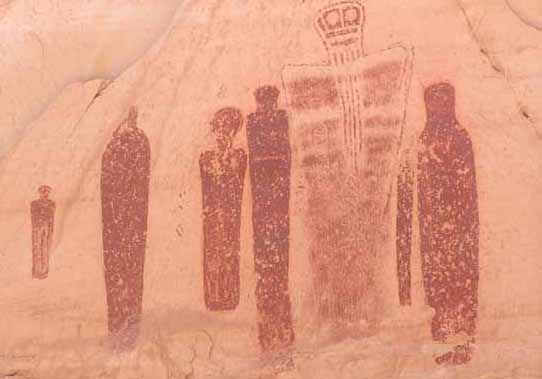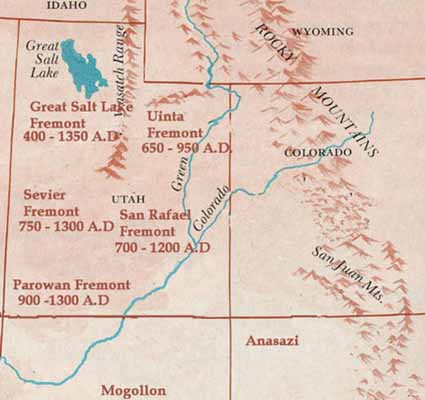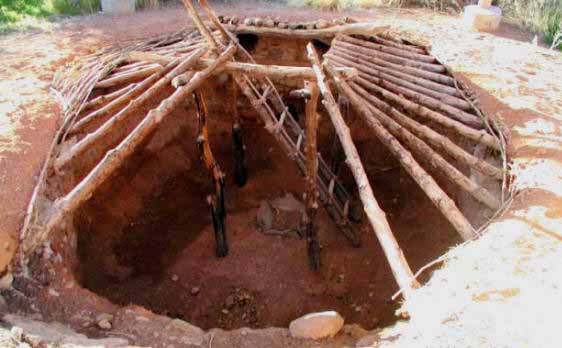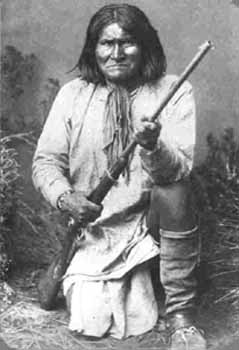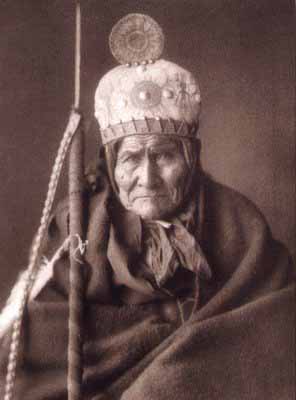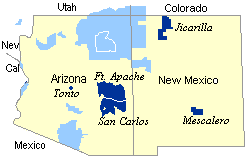Apache Social Structure
All Apachean peoples lived in extended family units (or family clusters); they usually lived close together, with each nuclear family in separate dwellings. An extended family generally consisted of a husband and wife, their unmarried children, their married daughters, their married daughters' husbands, and their married daughters' children. Thus, the extended family is connected through a lineage of women who live together (that is, matrilocal residence), into which men may enter upon marriage (leaving behind his parents' family). When a daughter was married, a new dwelling was built nearby for her and her husband. Among the Navajo, residence rights are ultimately derived from a head mother. Although the Western Apache usually practiced matrilocal residence, sometimes the eldest son chose to bring his wife to live with his parents after marriage. All tribes practiced sororate and levirate marriages.
All Apachean men practiced varying degrees of "avoidance" of his wife's close relatives, a practice often most strictly observed by distance between mother-in-law and son-in-law. The degree of avoidance differed in different Apachean groups. The most elaborate system was among the Chiricahua, where men had to use indirect polite speech toward and were not allowed to be within visual sight of the wife's female relatives, whom he had to avoid. His female Chiricahua relatives through marriage also avoided him.
Several extended families worked together as a "local group", which carried out certain ceremonies, and economic and military activities. Political control was mostly present at the local group level. Local groups were headed by a chief, a male who had considerable influence over others in the group due to his effectiveness and reputation. The chief was the closest societal role to a leader in Apachean cultures. The office was not hereditary, and the position was often filled by members of different extended families. The chief's leadership was only as strong as he was evaluated to be no group member was ever obliged to follow the chief. The Western Apache criteria for evaluating a good chief included: industriousness, generosity, impartiality, forbearance, conscientiousness, and eloquence in language.
Many Apachean peoples joined together several local groups into "bands". Band organization was strongest among the Chiricahua and Western Apache, while among the Lipan and Mescalero, it was weak. The Navajo did not organize local groups into bands, perhaps because of the requirements of the sheepherding economy. However, the Navajo did have "the outfit", a group of relatives that was larger than the extended family, but not as large as a local group community or a band.
On the larger level, the Western Apache organized bands into what Grenville Goodwin called "groups". He reported five groups for the Western Apache: Northern Tonto, Southern Tonto, Cibecue, San Carlos, and White Mountain. The Jicarilla grouped their bands into "moieties", perhaps influenced by the example of the northeastern Pueblo. The Western Apache and Navajo also had a system of matrilineal "clans" that were organized further into phratries (perhaps influenced by the western Pueblo).
The notion of "tribe" in Apachean cultures is very weakly developed; essentially it was only a recognition "that one owed a modicum of hospitality to those of the same speech, dress, and customs."[ The seven Apachean tribes had no political unity (despite such portrayals in common perception) and often were enemies of each other - for example, the Lipan fought against the Mescalero just as they did against the Comanche. Text from Ellie Crystal




